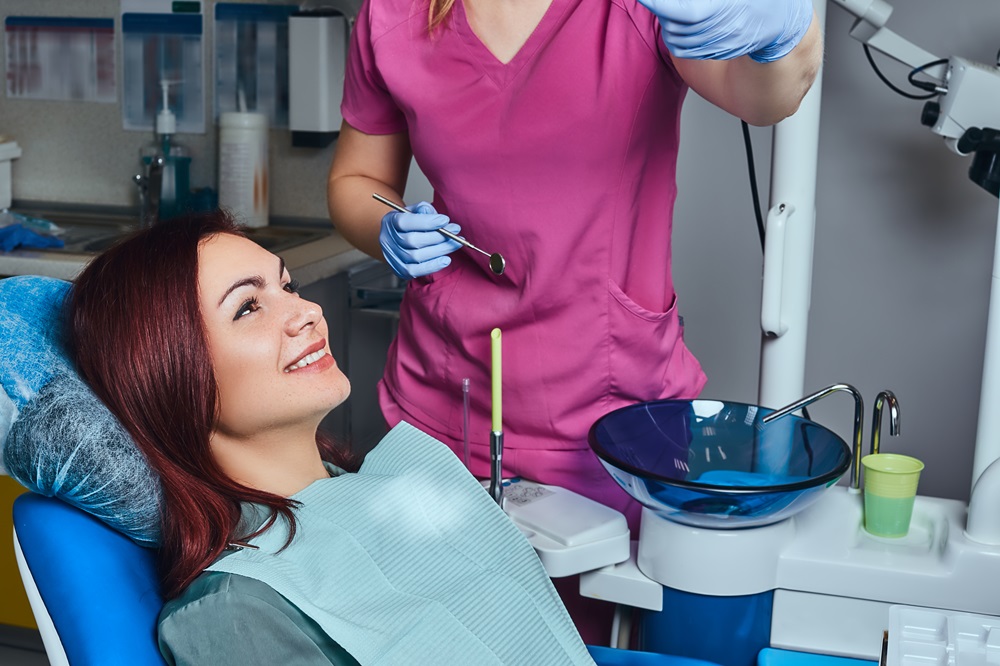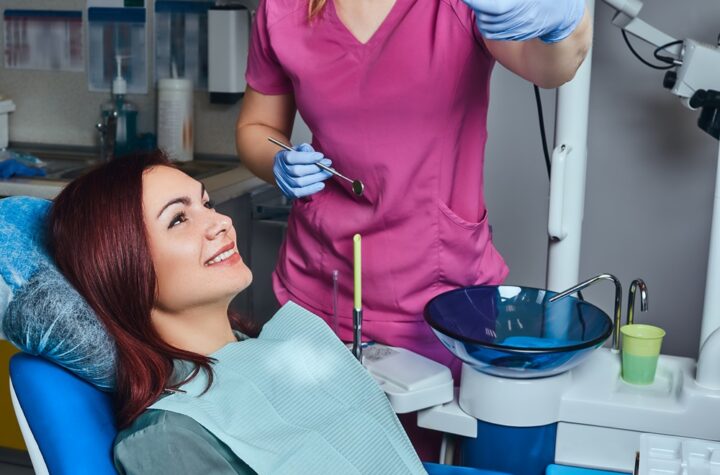
A young smiling woman having examination while sitting in a dental chair in the clinic.
Returning to Normal Eating After Wisdom Tooth Extraction: A Comprehensive Guide
Wisdom tooth extraction is a common oral surgery procedure performed to remove impacted or problematic wisdom teeth. While the procedure itself is relatively routine, recovery can involve some discomfort and require dietary adjustments. A crucial aspect of recovery is knowing what to eat and when to transition back to your normal diet. This guide delves into the timeline for returning to normal eating after wisdom tooth extraction, offering detailed information and helpful tips.
The Healing Process and Its Impact on Eating
Following wisdom tooth extraction, your mouth undergoes a healing process that involves forming a blood clot at the extraction site. This clot is essential for stopping bleeding and promoting tissue regeneration. Disrupting the clot can delay healing and potentially lead to infection. Therefore, the initial focus after surgery is on minimizing any disturbance to the extraction site.
This translates to avoiding foods that require forceful chewing or contain hard or sharp elements that could dislodge the clot. Soft foods and liquids put minimal stress on the extraction site, allowing for undisturbed healing.
A Day-by-Day Guide to Reintroducing Food After Surgery
Here’s a breakdown of what you can eat after wisdom tooth extraction, categorized by recovery stages:
First 24-48 Hours:
- Focus on Liquids: Stick to clear liquids like water, broth, diluted fruit juices (without pulp), and clear tea (avoid hot beverages). These provide essential hydration and don’t require chewing.
- Introduce Cold Soft Foods: You can incorporate cool or lukewarm soft foods like applesauce, yogurt (avoid chunky varieties), mashed potatoes (without chunky vegetables), and smooth puddings. The coolness can offer a soothing effect on any post-surgical discomfort.
Days 3-5:
- Soft Foods Take Center Stage: As swelling and discomfort subside, you can gradually introduce a wider variety of soft foods. Scrambled eggs, well-cooked pasta (avoid al dente), soft fish, and mashed vegetables are good options.
- Continue with Liquids: Don’t neglect liquids. Include smoothies made with yogurt, ripe fruits, and vegetables (avoid seeds) for added nutrition.
Days 6-7:
- Transition to Softer Solids: If you’re comfortable, you can start introducing softer solids like cooked chicken or fish (flaked), steamed vegetables (cut into small pieces), and soft cheeses.
- Maintain Caution: While introducing solids, prioritize chewing on the opposite side of your mouth from the extraction site to minimize disruption.
Week 2 and Beyond:
- Gradual Reintroduction: By week two, you should be able to gradually reintroduce most of your regular diet. However, listen to your body. If you experience any pain or discomfort while chewing, stick to softer foods for a while longer.
- Foods to Avoid: It’s still advisable to avoid certain foods like:
- Hard and crunchy foods (nuts, chips, popcorn)
- Sticky foods (caramel, candy)
- Spicy foods (can irritate the extraction site)
- Acidic foods (citrus fruits, tomatoes) – may cause sensitivity
- Foods requiring aggressive chewing (raw vegetables, tough meats)
General Tips for Smooth Eating Transition:
- Small Bites: Take small bites and chew slowly to minimize pressure on the extraction site.
- Maintain Good Oral Hygiene: Brush your teeth gently twice a day and rinse with a saltwater solution (1/2 teaspoon salt dissolved in a glass of warm water) after meals to prevent infection and promote healing.
- Stay Hydrated: Adequate hydration is crucial for healing. Aim for eight glasses of water daily.
- Listen to Your Body: Don’t rush the process. If you feel pain while chewing, return to softer foods and consult your dentist if needed.
Factors Affecting Your Return to Normal Eating
The speed of your return to normal eating can vary depending on several factors:
- Complexity of the Surgery: The difficulty of the extraction, such as the number of teeth removed and the location of the wisdom teeth, can influence healing time.
- Individual Healing Rate: Everyone heals at their own pace. Some individuals may regain normal eating function faster than others.
- Post-Surgical Complications: If you experience complications like dry socket (a painful condition due to a dislodged blood clot), eating normally might be delayed.
When to See Your Dentist
While some discomfort is expected after surgery, it’s essential to be aware of signs that might require a visit to your dentist:
- Prolonged or worsening pain
- Excessive swelling that doesn’t subside after a few days
- Fever
- Difficulty swallowing
- Persistent bleeding
- Pus discharge from the extraction site
- Foul odor or bad taste in your mouth





More Stories
Amoxicillin Dosage For Tooth Infection How Many Days
Why Does My Throat Hurt When I Yawn
Why Do My Teeth Hurt When I Have A Cold